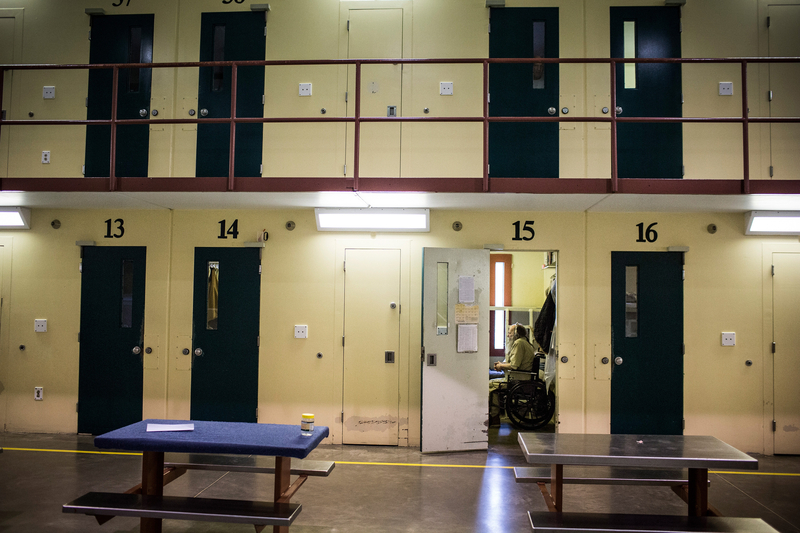
Anti-gerrymandering groups in Ohio and nationally are looking to correct what they say is a representational flaw in redistricting regarding prison populations.
As it stands now, those incarcerated in the country’s state and federal prisons are counted in the U.S. Census every 10 years as residents of the county in which their facility sits. Groups like Common Cause and the Prison Policy Initiative are asking the U.S. Census Bureau and, failing that, other government entities to change that policy.
“When you’re crafting a policy that is intended to last for decades, you want to ensure that things are as fair as possible,” said Catherine Turcer, head of Common Cause Ohio.
The national Common Cause Education Fund, in conjunction with the PPI, sent a letter to U.S. Census Bureau director Robert Santos and other agency leaders, asking that the bureau suspend its current method of privacy protection within its census data, which they claim led to “unnecessary inaccuracies” in the data set used for the most recent redistricting cycle, and had an “adverse impact,” especially on data for correctional facility populations.
The Census Bureau’s method uses the “intentional infusion of inaccurate information” into the data in an attempt to keep resident data safe, though some of the data creates miscounts, Common Cause and the PPI said.
Along with the inaccuracies the group said the privacy protection method created within census data sets, the bureau “continues to interpret its residence rule to count incarcerated people as residents of their prison cells rather than their home communities,” according to the letter, signed by PPI legal director Aleks Kajstura and Common Cause justice and democracy manager Keshia Morris Desir.
“As a result, when states use census data to draw new state or local districts, they inadvertently give residents of districts with prisons greater political clout than all other state residents,” Kajstura and Desir wrote.
Counting incarcerated individuals as residents of the county in which they are housed creates a problem, not only when it comes to representation for that incarcerated individual, but also for the county and community where they live when they aren’t serving out a sentence.
More often than not, those sentences don’t last a decade, as well, which means the data will be inaccurate before the next census is taken, but after districts have been drawn and resource distribution has happened, according to advocates.
Ohio’s prisons are in more rural areas than urban areas, with the Ohio Office of Prisons holding facilities in Ashtabula, Richland, Union, Madison, Pickaway, Fairfield, Ross, Noble and Scioto counties. Franklin, Marion, Montgomery, Lorain, Cuyahoga, Trumbull and Mahoning counties also house correctional facilities, according to the office.
And while changing the way in which incarcerated individuals are counted wouldn’t necessarily impact the way in which prisons are funded, it would change representation and the constituency that can engage with elected officials.
“It takes a little bit of representation from every community that has incarceration,” said Mike Wessler, communications director for the Prison Policy Initiative, which continues to oversee the Prison Gerrymandering Project, in an effort to advocate for better redistricting and census processes when it comes to incarcerated individuals.
Wessler said counting those in prisons as residents of the prison’s county also lowers the amount of impact residents who actually live in the counties with prisons can have on political issues.
The population of Ohio’s statehouse district 12, for example, is made up of 7% incarcerated people, according to PPI counts.
“What that means is 93 people in that district have the same power as 100 people in another district,” Wessler said.
Also, despite the fact that those incarcerated individuals are considered residents of the prison counties in census data, elected officials may not count them as part of the population to which they need to answer.
“Just about everyone we’ve heard from that represents a prison district has not considered incarcerated individuals a part of their constituency,” Wessler told the OCJ.
Even if the U.S. Census Bureau doesn’t change their methods, state and local governments have their own ways of changing the population representation. The U.S. has 14 states acting to change the way in which they draw districts to revise census data that places incarcerated individuals in their home county rather than their facility location, according to the PPI. Ohio could be a part of that list if voters approve redistricting reforms on the ballot in November.
As part of the constitutional amendment drawn up by Citizens Not Politicians, the 15-member citizens redistricting commission would be required to “provide that persons in the custody of the Ohio Department of Rehabilitation and Corrections or its successor agency shall be counted at their last known pre-incarceration address for purposes of population equalization,” according to the amendment.
GET THE MORNING HEADLINES DELIVERED TO YOUR INBOX
SUPPORT NEWS YOU TRUST.
This post was originally published on this site be sure to check out more of their content.








